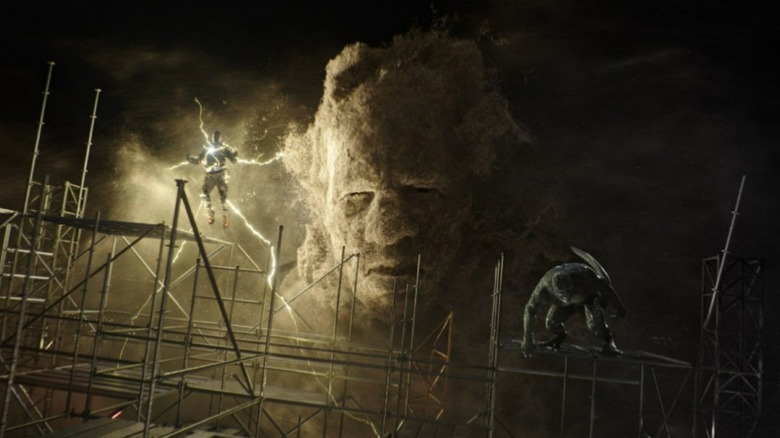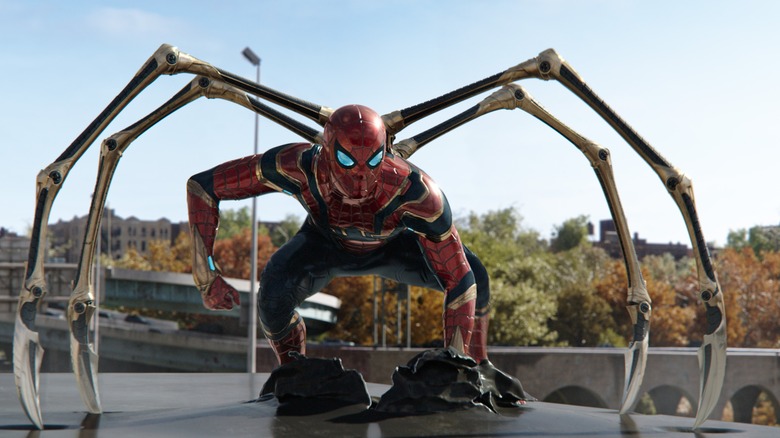How Spider-Man: No Way Home Made That Big Reunion Happen
Have you seen "Spider-Man: No Way Home" yet? The blockbuster event of the year — well, until "The Matrix Resurrections" arrives next week, at least — swung its way into theaters last night, thrilling opening night audiences who were ready to jump out of their seats at the slightest provocation and already leading to boatloads of box office dollars even before the weekend begins in earnest. For those fortunate enough to get a ticket to some packed-out screenings, questions abound about just how the Powers That Be managed to put together all the biggest reveals, moments, and multiversal reunions for the biggest and most sprawling "Spider-Man" movie yet. For those still waiting to see the movie, rest assured that we're keeping things spoiler-free here. You're safe to peruse this article at your ease, but be sure to pay attention to our various spoiler warnings at the top of our coverage today.
Check out the intriguing behind-the-scenes details of how this all came together from Sony's perspective below.
"It Takes a Multiverse"
You might think it isn't easy being Spider-Man, but I can think of at least one thing that might be even harder. Imagine being on the front lines of figuring out the complicated copyright headaches over how to bring Marvel's flagship superhero from the confines of Sony Pictures to the separate boundaries of the Marvel Cinematic Universe. It's all very superfluous, especially from the perspective of fans who simply want to enjoy seeing their favorite characters brought to life on the big screen, but there are some valuable insights to be gleaned from the pencil-pushers at the very top who made all this happen in the first place. Despite the brief moments of mass panic where it seemed as if the unprecedented deal between Marvel Studios and Sony would fall through before coming back together again, there was always a decent chance that the two studios would figure out a way. Believe it or not, it all comes down to a little thing called money.
In a report by THR, Sony's Tom Rothman commented on the nature of this combined franchise that began with Tom Holland's first appearance in 2016's "Captain America: Civil War" and has led to the recently-completed "Spider-Man" trilogy (though that doesn't appear to be the end of the line just yet):
"It is entirely unique. Characters from multiple iterations of multiple different franchises have united. It takes a multiverse to do that. And it takes a little bit of negotiation, too."
Yeah, no kidding. According to the article, "Sony began developing a 'Spider-Man' project that might have happened without Marvel Studios" in the aftermath of the two studios butting heads back in 2019. Their subsequent reconciling spawned the idea of the multiverse bringing together the villains from Sam Raimi's "Spider-Man" trilogy and Marc Webb's "The Amazing Spider-Man" films, leading to the plot of "Spider-Man: No Way Home." According to Chris McKenna, writer of "Homecoming," "Far From Home," and "No Way Home," attempting to bring these actors together from different franchises proved challenging. "It was tough. We were building pieces we weren't quite sure were there as we were trying to build them."
By all accounts, that risk appears to have paid off in a big way. "Spider-Man: No Way Home" is currently playing in theaters.

